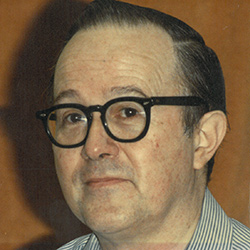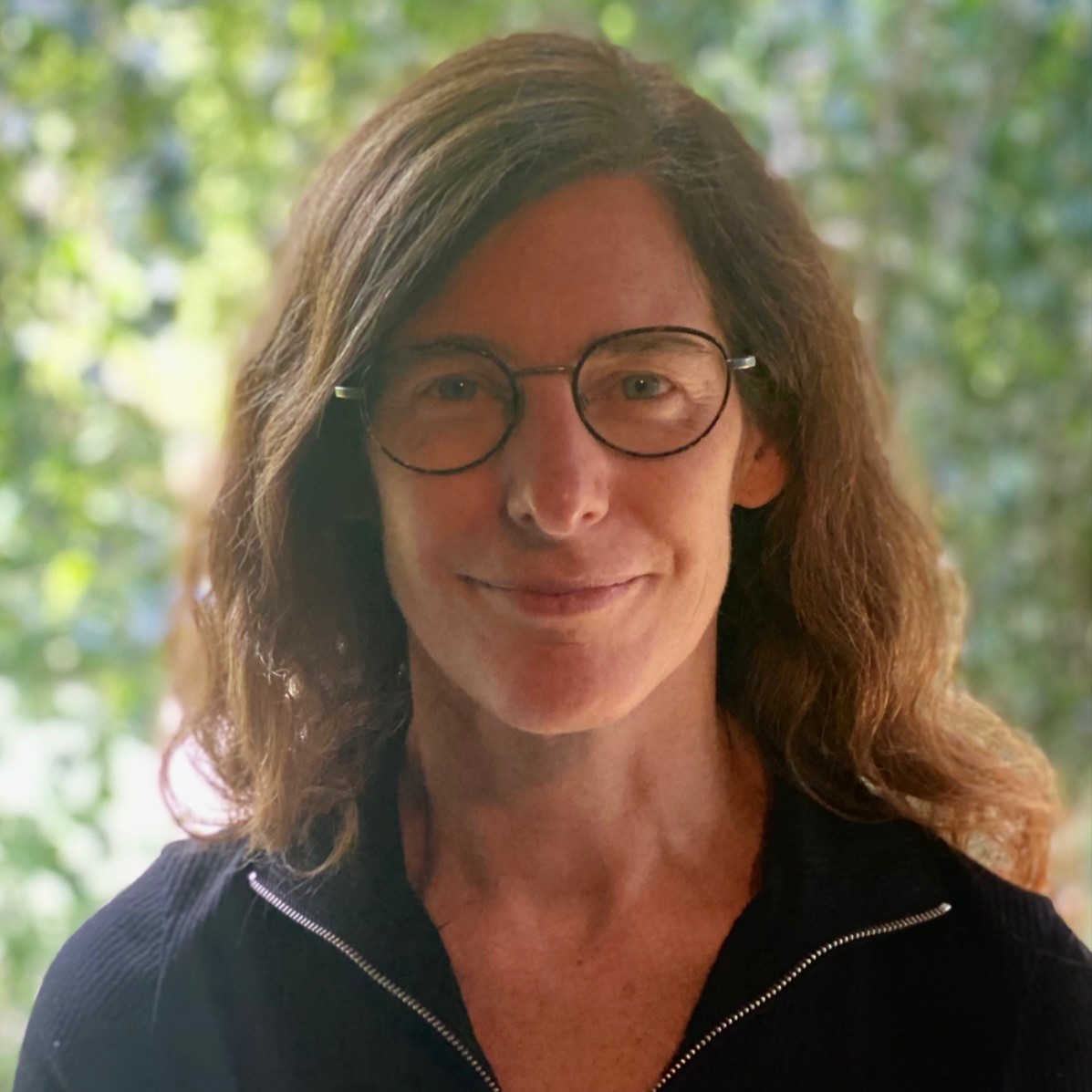News & EventsEdward L. Reiss Memorial Lectures

Reiss Lecturers give two seminars, usually on consecutive days:
- One lecture is a general talk, open to the public and accessible to the wider scientific community, covering broad topics in applied mathematics.
- One lecture is a more technical lecture discussing recent research results.
REGISTER HEREfor in-person attendance to the general audience lecture on 05/12 at 4pm.
2025 Reiss Lecture
As a part of the Reiss lecture series, Professor Adrienne Fairhall will deliver lectures on "In Search of Internal Models" and "Decoding Neurons to Behavior in a Model Organism" on Monday, 5/12 and Tuesday, 5/13 respectively.
Adrienne Fairhall

Adrienne Fairhall, Physiology, Biophysics and Applied Mathematics, University of Washington
In Search of Internal Mental Models
May 12, 2025, 4:00 PM Central Time, Ford Hive Room 2350
Zoom link: https://northwestern.zoom.us/j/99396073522
How do we build the mental models that we use to perceive, navigate and reason about the world? How might these models be inferred from neural activity? I will describe experiments and analysis in collaboration with Beth Buffalo's lab to explore these questions in our closest relatives, nonhuman primates. In one example, we compare monkey and human behavior in a decision task, and analyze how subjects make use of visual information and feedback to infer a hidden rule, where the rule switches in an uncued fashion. We fit a suite of behavioral models and learn that while humans are close to optimal Bayesian agents, monkey behavior is better fit as reinforcement learning. This allows us to seek neural implementations of this internal belief update. Further, while rodent hippocampus famously encodes the animal's spatial location, we find evidence that hippocampus in the primate serves a more cognitive role.
Decoding Neurons to Behavior in a Model Organism
May 13, 2025, 11:15 AM Central Time, Tech M416
Zoom link: https://northwestern.zoom.us/j/94136984398
The freshwater cnidarian Hydra is a fascinating model organism for neuroscience. It is transparent; new genetic lines allow one to image activity in both neurons and muscle cells; it exhibits a quite rich suite of behaviors; and it continually rebuilds itself. Hydra’s fairly simple physical structure as a two-layered fluid-filled hydrostat and the accessibility of information about neural and muscle activity open the possibility of a complete model of neural control of behavior. We have developed a biophysical and biomechanical model of Hydra's muscles and body that allows us to transform measured neural activity into behavior. We also propose a model for how the neural network rebuilds as the animal regenerates itself following bisection.
Previous Speakers
March 26-27, 2024
Filtration and Fluid Mechanics Inspired by the Manta Ray
A few short stories about probability and sports
Professor Anette (Peko) Hosoi, Mechanical Engineering and Mathematics, Massachusetts Institute of Technology
May 22-23, 2023
The Roles and Consequences of Randomness in Biological Systems
Interpretable Polynomial Neural ODEs
Professor Linda Petzold, Computer Science and Mechanical Engineering, University of California Santa Barbara
May 2-3, 2023
Writing About Math for the New York Times
Networks of Oscillators That Synchronize Themselves
Professor Steve Strogatz, Jacob Gould Schurman Professor of Applied Mathematics, Cornell University
April 19-20, 2021
Quantifying Patterns in Biological Systems
Localized Pattern Formation
Professor Björn Sandstede, Department Chair, Division of Applied Mathematics, and Professor of Applied Mathematics, Brown University
May 6-7, 2019
From Differential Equations to Data Science and Back
Accelerated Simulation for Plasma Kinetics
Professor Russel Caflisch, Director, Courant Institute of Mathematical Sciences, New York University
April 9-10, 2018
Fluid Mechanics at the Scale of the Cell
Upside-Down and Inside-Out: The Biomechanics of Cell Sheet Folding
Professor Raymond E. Goldstein, Schlumberger Professor of Complex Physical Systems, Department of Applied Math & Theoretical Physics, University of Cambridge
May 15-16, 2017
The Swim Pressure of Active Matter
The "Super-Fluid" Like Behavior of Active Matter
Prof. John F. Brady, California Institute of Technology
May 9-10, 2016
Predicting Shape: Geometry, Physics and Biology
Programming Shape: Geometry, Physics and Engineering
Prof. L. Mahadevan, Harvard University
May 11-12, 2015
Surface Nanobubbles and Nanodroplets: The Big Picture
The Phase Space of Turbulent Taylor-Couette Flow
Prof. Detlef Lohse, University of Twente, Netherlands
May 19-20, 2014
Spatially Localized Structures: Basic Theory
The Phase Space of Turbulent Taylor-Couette Flow
Prof. Edgar Knobloch, University of California, Berkeley
April 29-30, 2013
Beyond All Orders: The Future of Asymptotics?
Localised Pattern Formation and Snaking Bifurcation Diagrams
Prof. S. Jon Chapman, University of Oxford
April 30, 2012 & May 1, 2012
Confined Colloid Suspensions: Some Equilibrium Properties
Confined Colloid Suspensions: Some Out-of-Equilibrium Properties
Prof. Stuart Rice, University of Chicago
April 11-12, 2011
How The Leopard Got Its Spots
Mathematical Modeling of Tumor Dynamics
Prof. Philip Maini, University of Oxford
April 15-16, 2010
The Challenges of Sustainability
Collective Motion in Animal Populations
Prof. S. Levin, Princeton University
April 6-7, 2009
Frontiers in Complex Systems Research
Kinetics of Transitions Across a Barrier in the Presence of Time Dependent Forcing
Prof. G. Nicolis, Universite Libre de Bruxelles
May 5-6, 2008
Emergence of Spatial Patterns in Physical, Chemical and Biological Systems
Dymical Systems Invariant Curves as Barriers to Transport in Oceanic Flows
Prof. Harry Swinney, University of Texas
June 7-8, 2007
Polarization fingerprints in the clear blue sky
Physics of non-Hermitian degeneracies
Prof. Sir Michael Berry, University of Bristol
May 22-23, 2006
Flapping Flight as a Bifurcation in Reynolds Number
Paired Vortices, Vorticity Growth, and Hovering Flight
Prof. Stephen Childress, Courant Institute, NYU
This lecture was co-sponsored by the IGERT program.
May 23-24, 2005
Bifurcations and Geometry
Continuum Equations for Rarefied Gases
Prof. Edward A. Spiegel, Columbia University
May 17-18, 2004
Passive and Active Array Imaging in Clutter
High Capacity Communication Systems in Complex Environments
Prof. George C. Papanicolaou, Stanford University
May 12-13, 2003
Adaptive and Parallel Discontinuous Galerkin Methods for Conservation Laws:
Fundamental Computational and Theoretical Properties
A-Posteriori Error Estimation and Superconvergence
Prof. Joseph E. Flaherty, Rensselaer Polytechnic Institute
May 13-14, 2002
The Mathematics of Visual Perception:
Binocular Vision
Color Vision
Prof. Joseph B. Keller, Stanford University
May 14-15, 2001
Continuation, Bifurcation and Homotopy in Scientific Computation
The Recursive Projection Method: Stabilization and Acceleration of Iterative Processes
Prof. Herbert B. Keller, California Institute of Technology & University of California, San Diego
